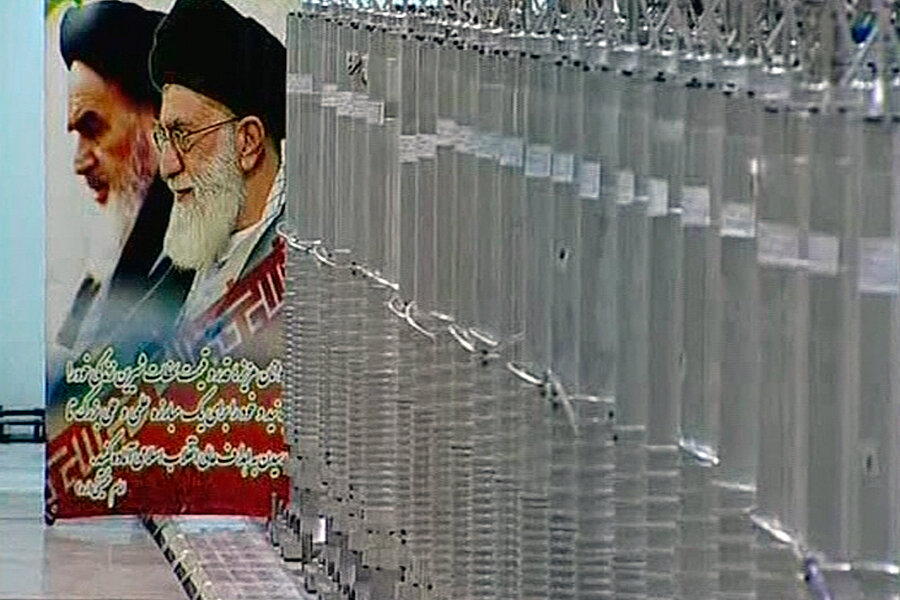Why US-Iranian meet is a worrying sign for nuclear talks
Loading...
| Istanbul, Turkey
Top US and Iranian diplomats are wrapping up a bilateral meeting abruptly convened amid worries that disagreements at the negotiating table threaten a final nuclear deal next month.
Steady momentum toward a deal dropped off last month after Iran and six world powers accused each other of imposing unrealistic demands on each other. The unplanned meeting yesterday and today indicates the magnitude of the hurdles that remain, as diplomats seek a compromise to get negotiations back on track.
“When Iranian and American negotiators leave Geneva tonight, they will know if the light at the end of the tunnel is an oncoming train or not,” says Ali Vaez, the senior Iran analyst for the Brussels-based International Crisis Group.
The US sent its A-team this time: the No. 2 diplomat, Deputy Secretary of State William Burns; the top US negotiator on Iran Wendy Sherman, the undersecretary of state for political affairs, and national security adviser to the vice president, Jake Sullivan. Mr. Burns and Mr. Sullivan both met secretly with Iranian officials last year, paving the way for an interim agreement last November.
“We are at a critical juncture in talks,” US State Department deputy spokeswoman Marie Harf told journalists in Washington. After the last talks, “we hadn’t seen enough [progress] made, we hadn’t seen enough realism.”
Yet Iran said it was the US, not Iran, that needed to yield. “The other side should take tough decisions to provide for our views,” Iranian Deputy Foreign Minister Seyed Abbas Araqchi told Iranian journalists.
“The onus should be on both parties. Pretending the ball is in the other’s court has been one of the most futile exercises of the past decade,” says Mr. Vaez.
Centrifuges and enrichment
The top issue remains the scale of Iran's uranium enrichment, as it has been throughout 2 1/2 years of talks. For months negotiators appeared to be making steady progress in their drive to limit Iran’s nuclear program to exclusively peaceful purposes. But as a July 20 deadline looms, crucial differences remain.
Iran currently has 19,000 installed centrifuges, though only half are enriching uranium – the process that produces nuclear fuel for power plants, or nuclear material for a bomb if taken to higher levels.
Sources close to the talks say both sides reverted to less compromising positions in the last round of talks in Vienna.
The US wants that number curtailed to several thousand spinning centrifuges, leaving Iran with only a token enrichment capacity. In exchange, the US is offering limited and reversible sanctions relief.
But Iran wants to increase the number of operating centrifuges to 100,000 or more to meet future energy needs. It has said it would accept more intrusive inspections and other safeguard measures, but expects a full lifting of nuclear-related sanctions in return.
“We are still hitting a wall on one absolutely fundamental point, which is the number of centrifuges which allow enrichment,” French Foreign Minister Laurent Fabius told France Inter radio today, Reuters reports. “We say that there can be a few hundred centrifuges, but the Iranians want thousands so we’re not in the same framework."
Several compromise solutions have been floated, but they may not be acceptable to either a US Congress that is currently considering additional sanctions – limiting what President Obama can offer Iran up front – or to hardliners in Iran, who already consider the interim deal a “rip off.”
“The problem is not about physics. It is about politics,” says Vaez. “Therefore direct political discussions between the two main stakeholders offers a surefire shortcut to a deal. If a solution is hammered out between Tehran and Washington, all other members of the P5+1 are likely to accept, even if grudgingly.”
Iran is negotiating with the so-called P5+1 group (the US, Russia, China, Britain, France and Germany). The next full round of talks are slated for June 16 to 20 in Vienna. Iran will also be holding bilateral meetings tomorrow with French and Russian diplomats.








